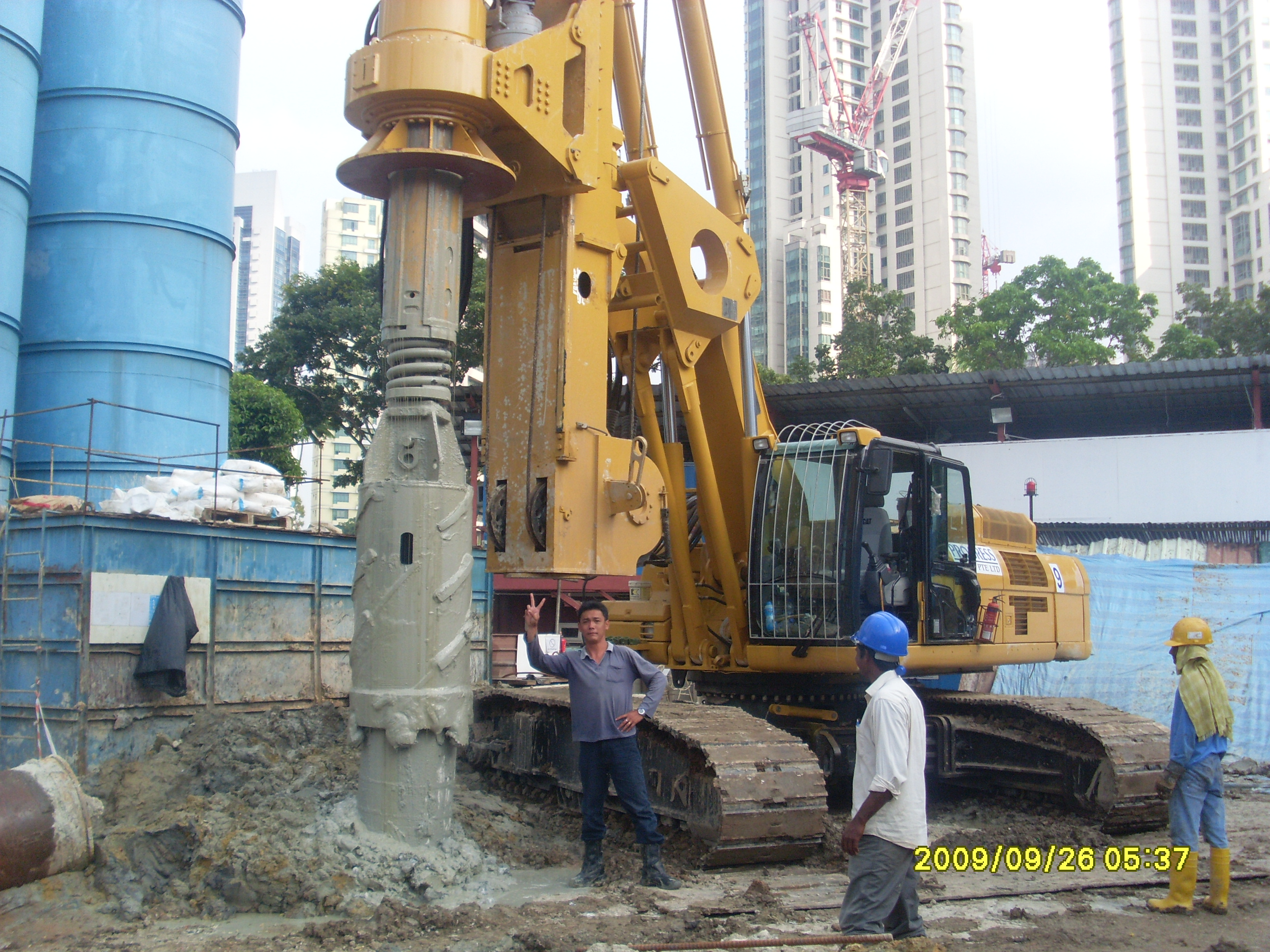The sediment of pile bottom may be generated in the construction of drilling holes, the placement of steel cage, and the pouring of concrete. The analysis shows that the causes of sediment can be roughly divided into the following categories:
1.1 Pile hole hole wall collapse
1.1.1 Cause Analysis in the pile hole; the mud proportion is too low, the suspension capacity is poor; the lifting drilling tool is too fast to form the suction of the hole; during the drilling, the mud level drops and the mud in the hole is not timely replenished; the drilling tool scratches the hole wall; the hole wall; the reinforcement cage is not timely poured concrete after the final hole, and the hole wall is too long.
1.1.2 Control measures: lengthen the length of steel shield tube according to the formation conditions; increase the proportion of mud, increase the viscosity of mud and reduce the deposit at the bottom and control the drill to fill the drill and avoid suction site; raise the hole and reduce the steel cage to the medium and vertical after the final hole to reduce the auxiliary operation time.
1.2 Mud precipitation
1.2.1 Cause analysis
The mud performance parameters are unqualified, the wall protection effect is poor; the waiting time before perfusion is too long, the mud precipitation; the mud sand content is high.
1.2.2 Control measures
Prepare mud with appropriate parameters, timely test and adjust the mud performance; shorten the perfusion waiting time and avoid mud precipitation; set up a mud sedimentation tank or mud separator to separate the mud sediment and adjust the mud performance.
1.3 borehole residual
1.3.1 Cause analysis
The deformation or wear of the drilling tool drilling bottom is too large, and the muck leakage generates sediment; the drilling bottom structure itself is limited, such as the layout height and spacing of the drilling teeth, which causes the excessive sediment residue.
1.3.2 Control measures
Select suitable drilling tools, and check the drilling bottom structure frequently; reduce the rotating bottom and fixed bottom gap; timely weld the diameter strip, replace the seriously worn edge teeth; reasonably adjust the layout angle and spacing of the drilling teeth; increase the number of slag removal to reduce the residue of pile bottom.
1.4 Hole-clearing process
1.4.1 Cause analysis
The suction causes the hole cleaning; the mud performance is not up to the standard, the sediment cannot be carried out of the bottom of the hole; the hole cleaning process is not selected, and the sediment cannot be cleaned.
1.4.2 Control measures
Control the suction force of the pump to reduce the impact on the hole wall, change the slurry and adjust the mud performance index, and select the suitable secondary hole cleaning process according to the drilling condition.
Secondary hole clearing technology of rotary drilling bored pile
In the process of rotary drilling, appropriate measures should be taken to avoid the sediment. After the reinforcement cage and pouring pipe, the appropriate secondary hole cleaning process should be selected for the sediment treatment. The second hole clearing is the key process to remove the sediment at the bottom of the hole after digging the hole, entering the steel cage and the perfusion catheter. The reasonable selection of secondary hole cleaning process is extremely important to remove the sediment of the bottom hole and ensure the quality of pile engineering. At present, the secondary hole cleaning technology of rotary digging pile hole in the industry can be divided into the following three categories according to the mud circulation mode: mud positive circulation hole cleaning, reverse circulation hole cleaning and drilling tools without mud circulation hole cleaning.
Post time: Mar-25-2024

